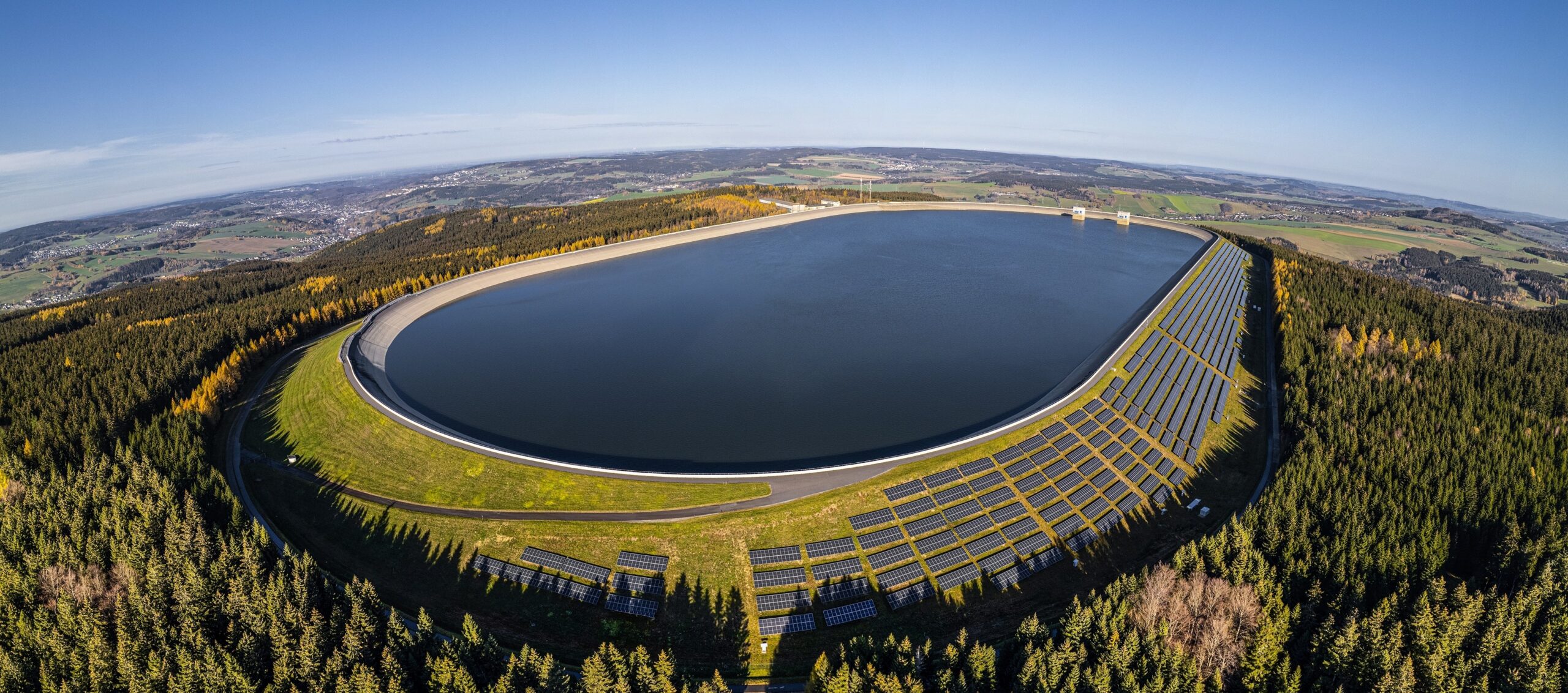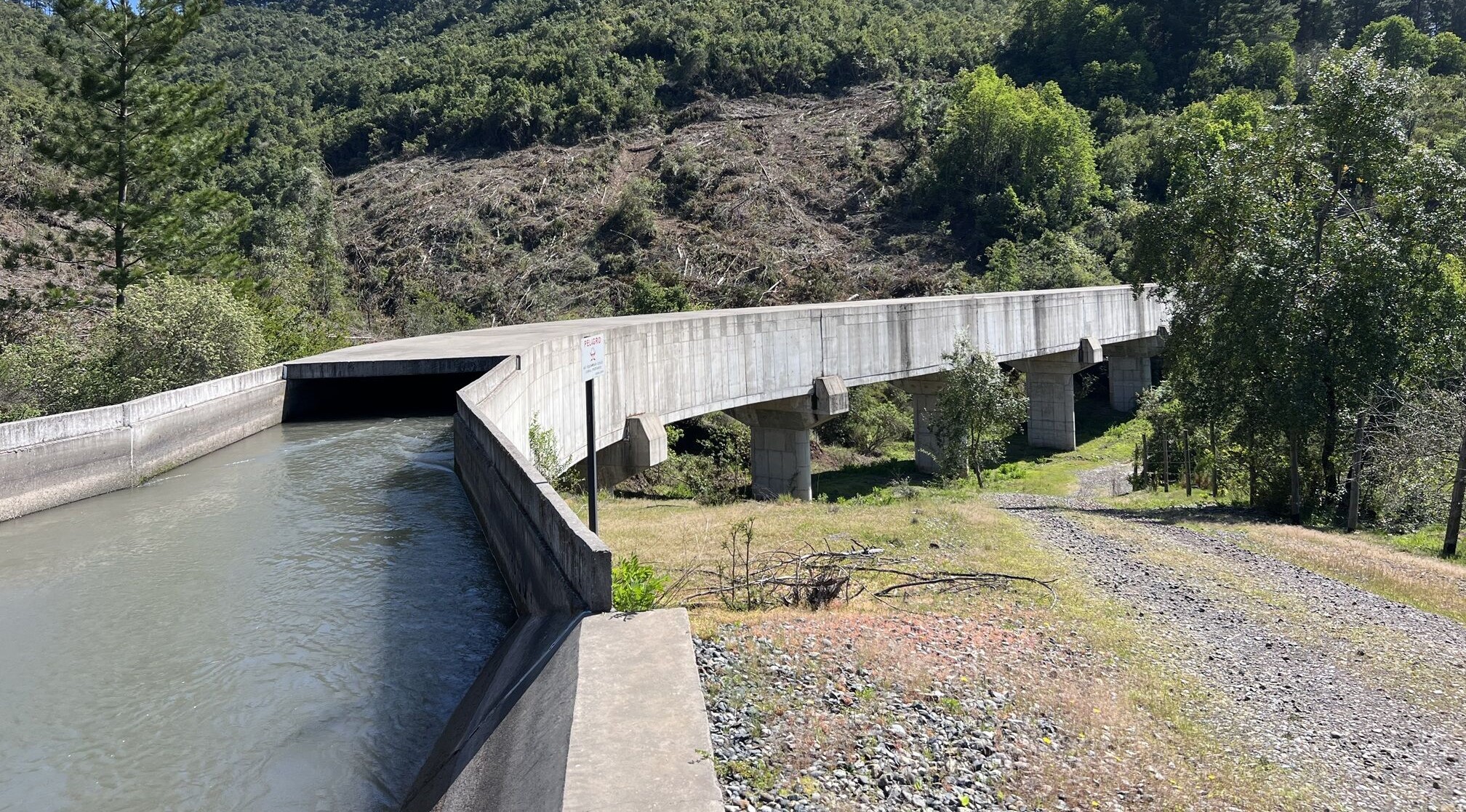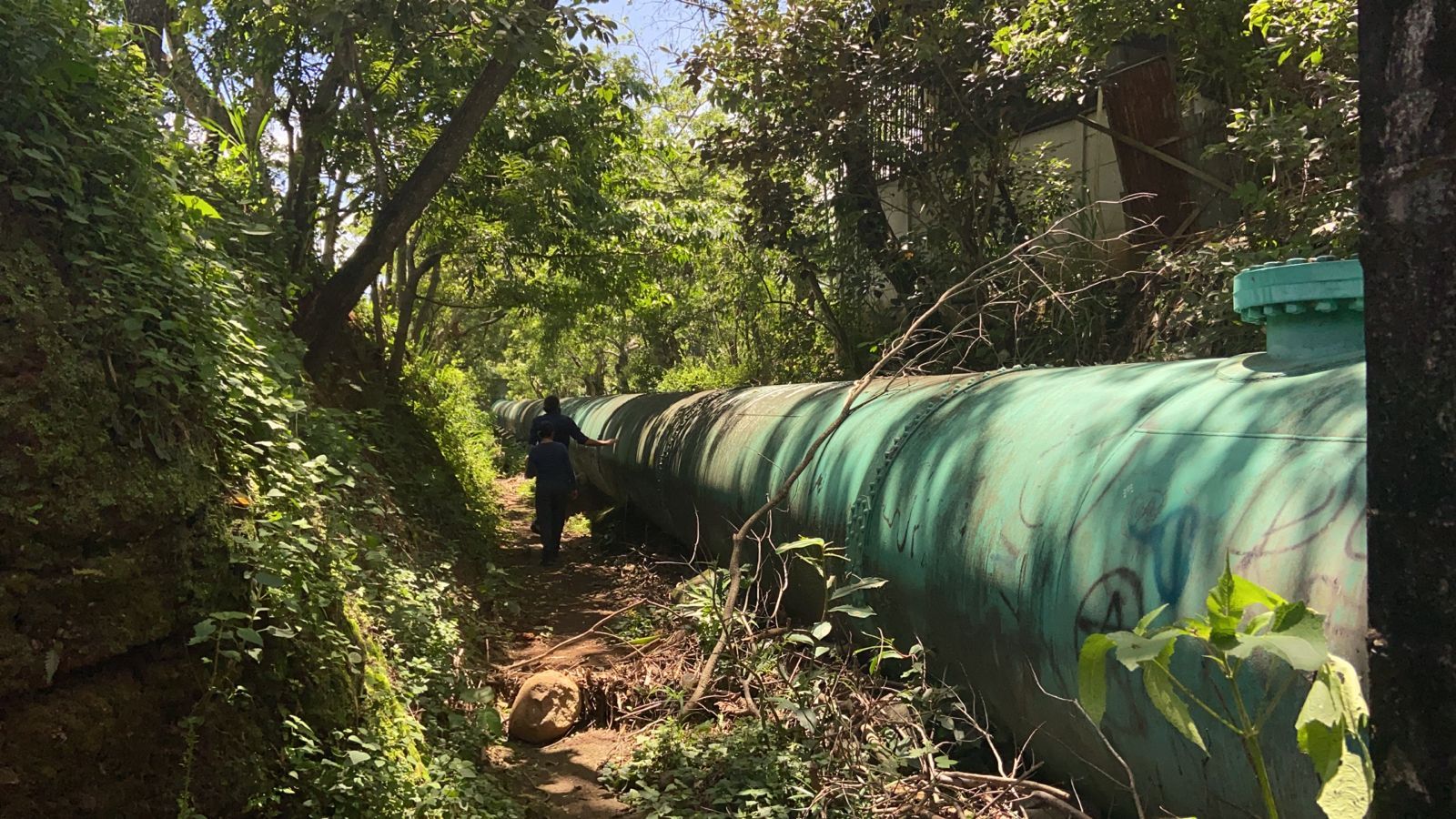Pumped Storage Hydropower: The Cornerstone of Energy Storage
As the urgent need for new Pumped Storage Hydropower (PSH) facilities grows to support the deployment of renewable energy, HYVITY is accelerating its investments in this proven and mature technology.
A Critical Need for Energy Storage
The global energy transition hinges on the large-scale deployment of renewable energy sources such as solar and wind. While these technologies significantly reduce greenhouse gas emissions, their intermittent nature poses a major challenge to grid stability. In this context, PSH emerges as an indispensable solution to balance electricity supply and demand while offering sustainability and minimal environmental impact.
Reliable and Sustainable Storage: A Key to Decarbonization
Global electricity demand is rising rapidly, driven by increasing renewable energy production, electrification across industries and transportation, and overall economic growth. Several energy transition scenarios project that by 2030, electricity demand will increase by approximately 25% to 30% compared to 2020. Commitments made at COP28 (2023) aim to triple global renewable energy capacity to at least 11,000 GW by the same year.
By 2050, the International Energy Agency (IEA) estimates electricity consumption will have doubled compared to 2020. In carbon neutrality scenarios, solar and wind could account for up to 70%–80% of total electricity generation. To facilitate this rapid deployment, energy storage capacity must expand significantly—by a factor of fifteen globally by 2030, according to the IEA.

Many regions are already facing grid constraints due to the rapid growth of renewables. For example:
- Vietnam has slowed its solar development after installing 17 GW of photovoltaic capacity too quickly.
- Chile is experiencing significant energy curtailment, leading to lost electricity and investor uncertainty.
- Europe is witnessing an increasing frequency of negative electricity prices, disrupting market stability.
To address these challenges, robust and efficient storage solutions are imperative. By 2050, more than €500 billion in annual investments will be required to achieve global energy storage goals.
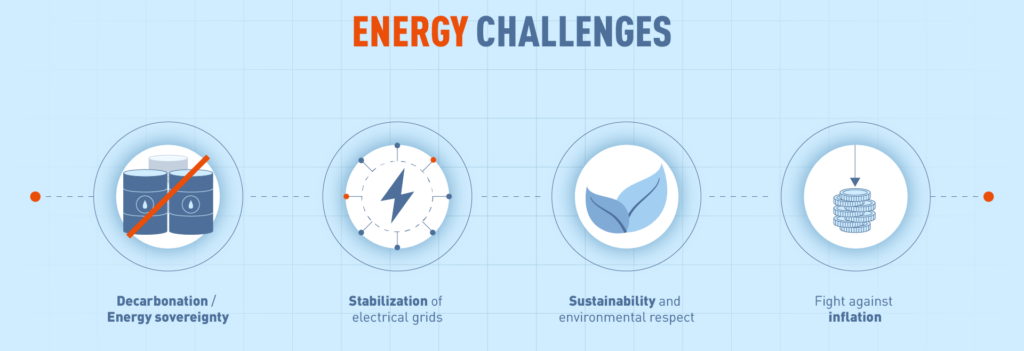
Pumped Storage Hydropower: A Sustainable and Proven Storage Solution
PSH accounts for over 97% of global energy storage capacity (9,000 GWh, according to the International Hydropower Association). These facilities play a key role in stabilizing grids and reducing emissions. Historically, PSH has also been critical for energy security, ensuring supply resilience during disruptions to thermal generation or outages at strategic power plants.
As the most mature and efficient large-scale energy storage technology, PSH adapts seamlessly to daily demand fluctuations, storing excess solar generation during the day and redistributing energy at night.
Key Advantages of PSH:
- Durability and Longevity: PSH plants have an operational lifespan exceeding 70 years, far outlasting other storage technologies.
- High Energy Efficiency: With a round-trip efficiency of approximately 80%, PSH ensures optimal energy utilization without degradation over time.
- Low Carbon Footprint: The PSH projects developed by HYVITY emit an average of only 25g CO₂eq/kWh, significantly lower than other storage solutions.
- Operational Flexibility: Modern variable-speed PSH systems allow rapid response to demand fluctuations, enhancing renewable integration.
- Large-Scale Storage Capacity: With facilities capable of storing more than 1 GW of power for multiple cycles, PSH is essential for mitigating renewable intermittency, particularly on 8-hour or longer cycles.
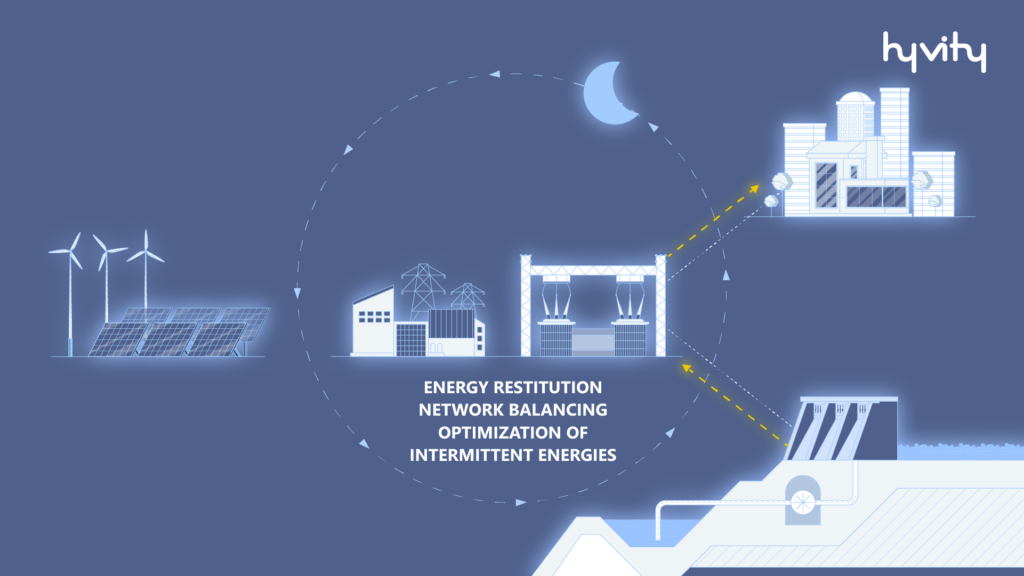
Beyond these benefits, PSH also supports water management for agriculture, firefighting, and other applications, while posing minimal operational risks compared to other storage technologies.
Currently, 78 GW of new PSH capacity is expected to come online by 2030, primarily in China. However, this represents only a 50% increase from today—far below the scale required to meet future storage needs.
HYVITY: Leading the Development of Pumped Storage Hydropower
HYVITY aims to become a major player in PSH development, targeting regions where this infrastructure is particularly relevant. Our efforts focus on countries with strong macroeconomic fundamentals, high energy demand, and ambitious decarbonization goals. Our target portfolio includes 3 GW of hydro storage projects (~24 GWh/day) for commissioning by 2030.
Priority Markets for HYVITY:
- Chile: With a stable regulatory framework and a liberalized energy market, Chile presents a significant opportunity for PSH. The country’s strong mining sector (copper, lithium) requires continuous power, making energy storage essential for decarbonization. HYVITY has already secured several PSH projects and aims to supply more than 1 GW (8 GWh/day) to the grid by 2030.
- Vietnam: With rapidly growing energy demand, Vietnam’s PDP8 energy master plan includes 2,400 MW of PSH capacity by 2030. HYVITY is working with local partners to develop PSH solutions, including repurposing agricultural reservoirs for storage projects.
- Costa Rica: Located at the heart of the Central American energy grid, Costa Rica has the potential to become a major green energy exporter. HYVITY has identified promising sites and established a strategic partnership with the national grid operator to facilitate deployment.
Hydro Storage vs. Battery Storage
While battery energy storage systems (BESS) have gained popularity, they represent less than 3% of global storage capacity. Despite substantial financial investments in battery production, only 97 GWh of new storage was added worldwide in 2023.
Batteries can be a complement to PSH but they are far less cost-effective over longer storage cycles. Even China, the world’s largest battery producer, is prioritizing PSH, which is expected to cover over 50% of its future storage needs. Other countries, including the United States, the United Kingdom, and Australia, are following similar strategies.
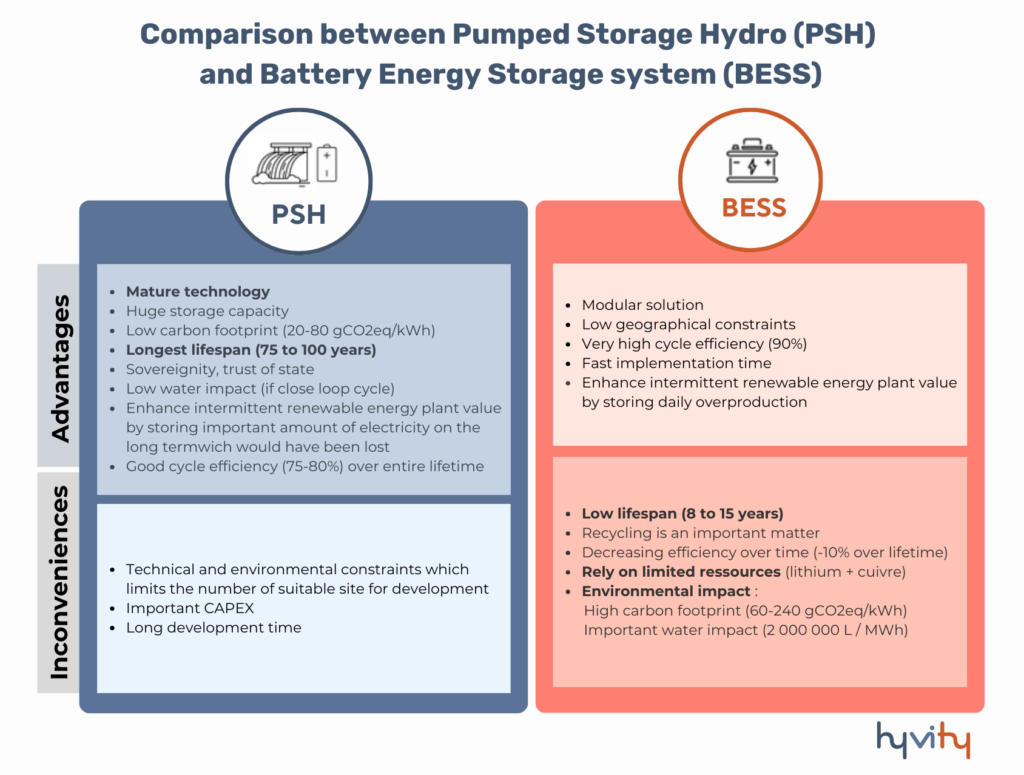
Additionally, large-scale battery deployment poses significant environmental and economic challenges due to the extraction and export of rare metals, as well as recycling complexities. A comparative impact analysis highlights the sustainability challenges of battery storage and its limitations in meeting long-term grid storage needs.
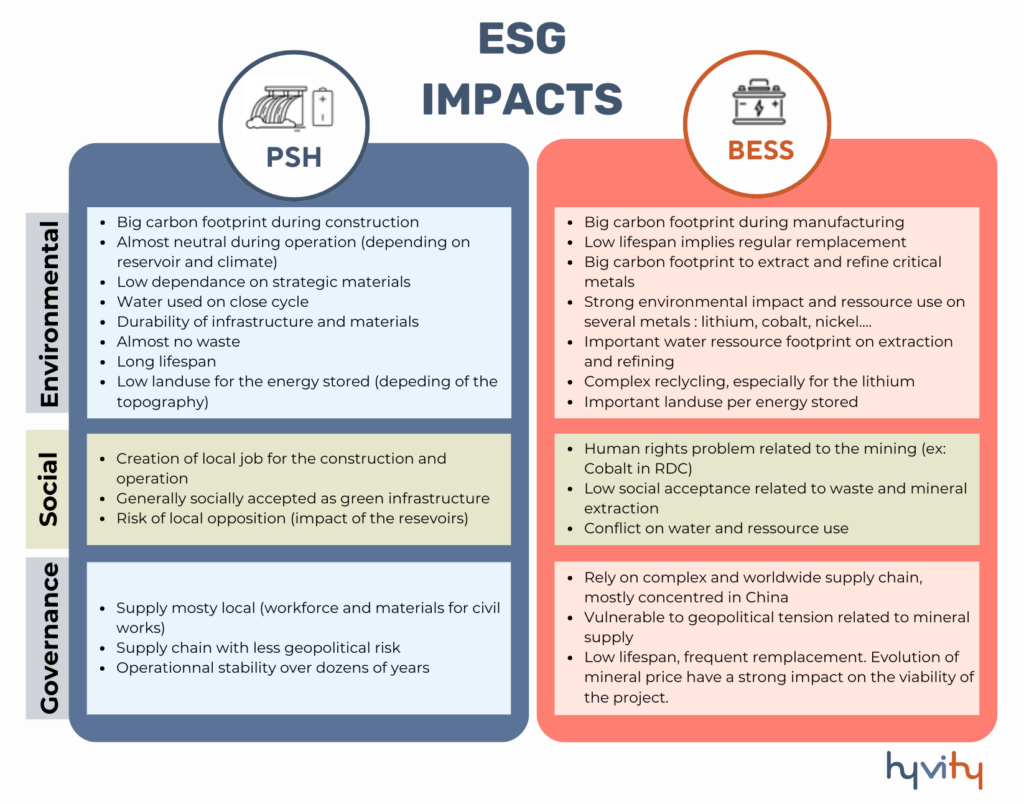
HYVITY’s Commitment to Sustainable Hydro Storage
For the past three years, HYVITY has been very active in hydro storage development, identifying optimal sites for reliable and sustainable solutions. Whenever possible, we leverage existing infrastructure to minimize environmental impact and enhance compatibility with diverse water uses. Utilizing pre-existing reservoirs—whether for agricultural, industrial, or mining purposes—reduces construction needs and mitigates ecological and social disruptions.
By investing in sustainable infrastructure and adhering to the highest environmental and social standards, HYVITY actively contributes to a global energy transition aligned with the United Nations’ sustainable development goals.
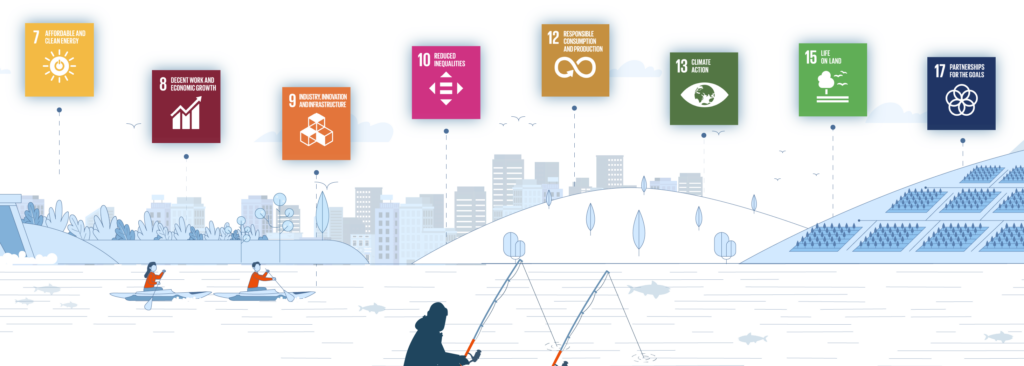
The data cited in this article are sourced from reports published by the International Energy Agency (IEA) and the International Hydropower Association (IHA):
www.hydropower.org
www.iea.org
